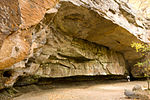Little Cuyahoga River
Cuyahoga RiverNortheastern Ohio geography stubsOhio river stubsRivers of OhioRivers of Portage County, Ohio ... and 1 more
Rivers of Summit County, Ohio
The Little Cuyahoga River is a 17.4 mile-long tributary of the Cuyahoga River in the U.S. state of Ohio. Located in southeastern Summit County and southwestern Portage County, its 61.7 square mile watershed drains portions of Akron, Tallmadge, Springfield Township, Lakemore, Mogadore, Brimfield Township, Suffield Township, and Randolph Township.
Excerpt from the Wikipedia article Little Cuyahoga River (License: CC BY-SA 3.0, Authors).Little Cuyahoga River
Ohio & Erie Canal Towpath Trail, Akron Merriman Hills
Geographical coordinates (GPS) Address Nearby Places Show on map
Geographical coordinates (GPS)
| Latitude | Longitude |
|---|---|
| N 41.1196 ° | E -81.5293 ° |
Address
Ohio & Erie Canal Towpath Trail
44303 Akron, Merriman Hills
Ohio, United States
Open on Google Maps








